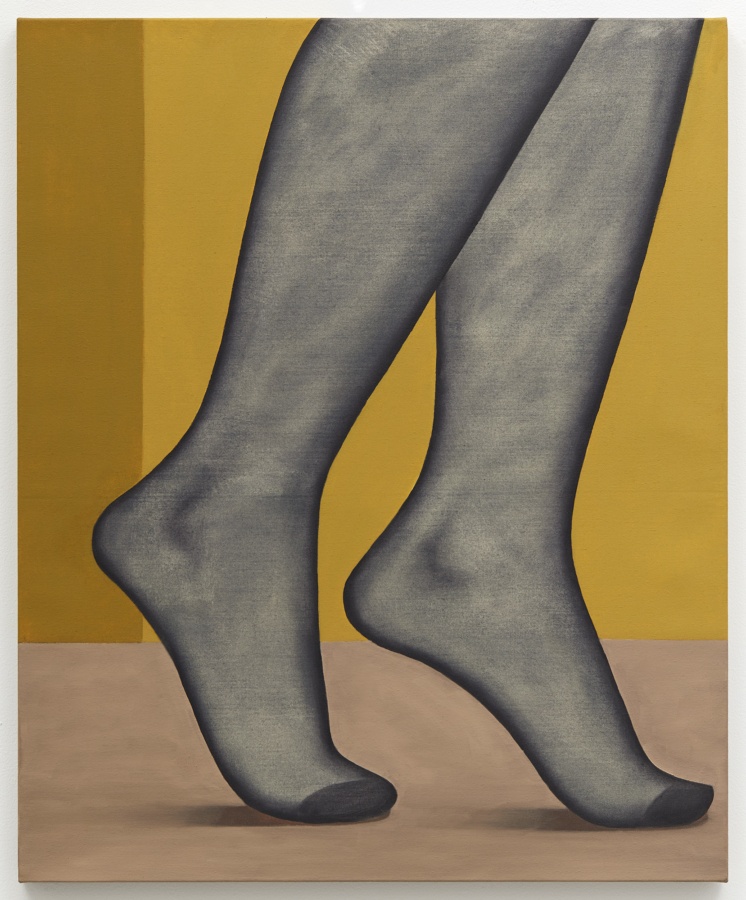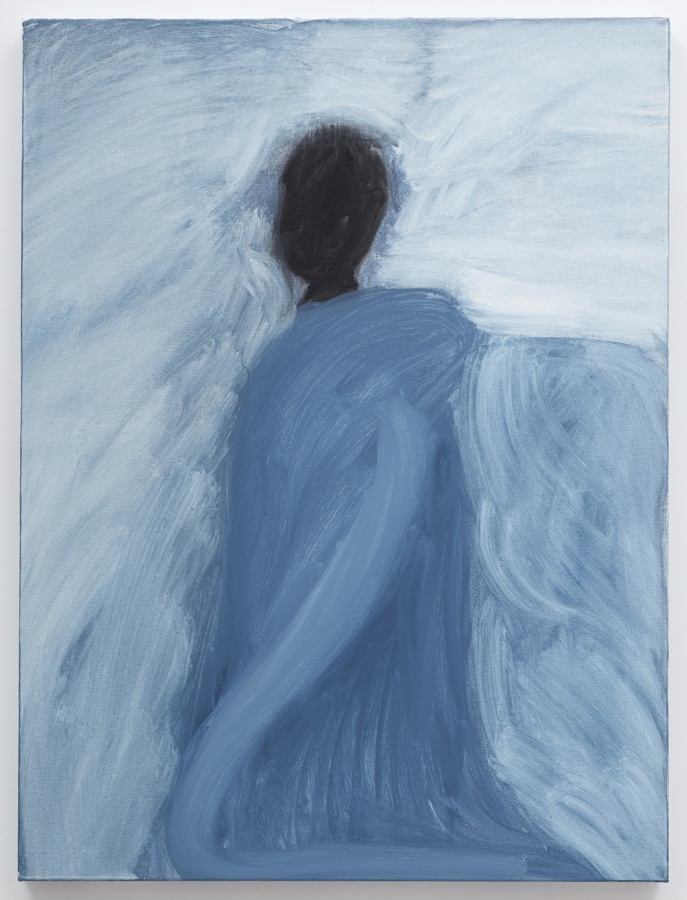August 21, 2019
Download as PDF
View on The New York Times
Ceramic sculptures; warped photographs; floral still lifes; treasures in a trash collection; and swoops of acrylic indigo.
Henni Alftan, Matt Hilvers, Ruth Ige, Andrew Sim
Four separate painting shows currently fill as many consecutive rooms at Karma Gallery. What they have in common is a tight focus on the way we take in and construct images. The Glasgow-based Andrew Sim, in the first room, makes gentle pastels with titles like “A tree with twin trunks.” But by including a yeti and a U.F.O. among these restful scenes, he reminds us that nature, too, is constructed by the imagination.

Henni Alftan, Tiptoeing, 2019, oil on canvas, 28 3⁄4 × 23 1⁄2 inches
Henni Alftan, born in Helsinki and working in Paris, paints our ideas of how things look — colorful, sharp-edged, a little flat. (A fine pair of small paintings, both called “Tiptoeing,” neatly argue that it’s her stockings that shape a woman’s ankles and not vice versa.) Matt Hilvers, the show’s only American, looks at the strange way words can dance and combine when they’re peeled away from the objects they refer to. In “Culture (Car) (Positioned),” curving bits of highway spell the word “Culture” against a bright, schematic landscape.

Ruth Ige, Amongst the winds and waves, 2019, acrylic on canvas, 40 1⁄4 × 30 inches
In the final room, Ruth Ige, who was born in Nigeria and lives in New Zealand, uses figuration like a weight to hold down great swoops of acrylic indigo, cerulean and gray. This figurative weight, though head-shaped and solid black, is the opposite of a silhouette. Its blackness isn’t neutral or empty but full and mysterious, a place where gestures and moods concentrate into unknowable density.



